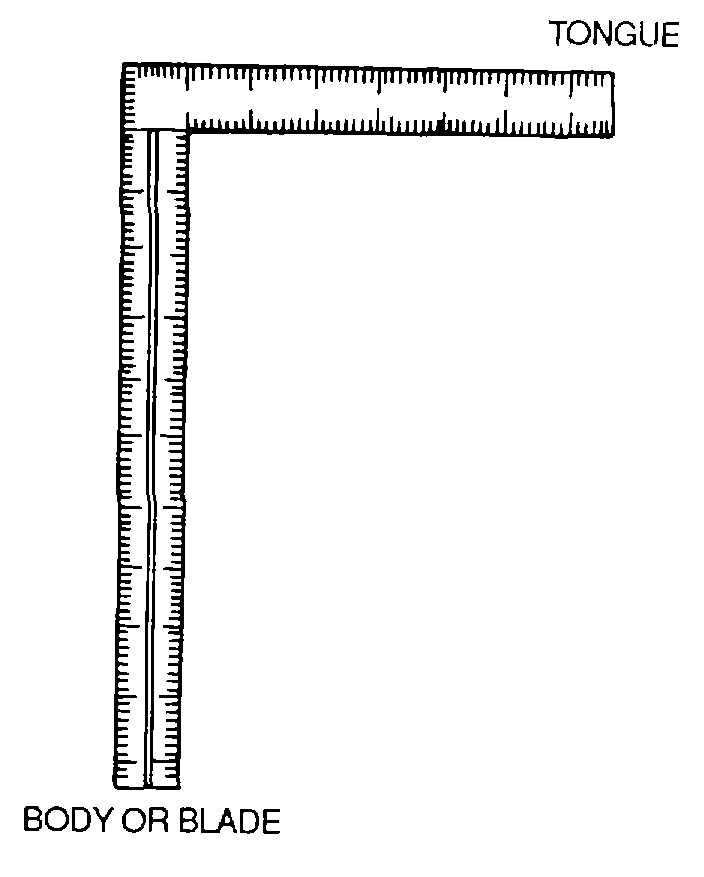TM 1-1500-204-23-9
b. Rules. Rules are usually made of flexible or rigid
steel and are 4, 6, or 12 inches long. They are
graduated in 1/8, 1/16, 1/32, and 1/64 inch divisions.
When the total length of a measurement is not too
great, the rule should be used. It is more accurate and
easier to read than the tape. A typical rule is shown in
figure 3-9.
Figure 3-9. Typical Rule
c. Care of Tapes and Rules. To ensure that rules
and tapes will always produce reasonably accurate
measurements, keep them clean and dry. Store rules
and tapes where they will not become bent or damaged.
3-6. Squares. Squares are primarily used for testing
and checking trueness of an angle or for laying out lines
on materials. Most squares have a rule marked on their
edge. As a result they may also be used for measuring.
a. Types. The common types of squares include
the carpenter's, try, combination, sliding T-bevel, and
the bevel protractor squares.
(1) Carpenter's square
. The carpenter's
square, shown in figure 3-10, is made up of two parts:
the body or blade, and the tongue. It has inches divided
into eighths, tenths, twelfths, and sixteenths.
(2) Combination square. A combination
square is made of the components shown in figure 3-11.
(a) Rule. The combination square has a
slotted 12-inch stainless steel rule (9) which is
graduated in eighths, sixteenths, thirty-seconds, and
sixty-fourths of an inch. It can be used as a measuring
scale by itself or with any one of the following
components.
(b) Center head. The center head (5),
when attached to the rule, bisects a 90-degree angle. It
is used for determining the center of cylindrical work.
Figure 3-10. Carpenter's Square
(c) Protractor. The protractor (7) has a
level (6) and a revolving turret (4) which is graduated
in degrees from 0 to 180 or 0 to 90 in either direction. It
is used to lay out and measure angles to within one
degree.
(d) Square head. The square head (3) has
a level (6), a scribe (1), and 45-degree (8) and
90degree (10). It is used to lay out 45and 90-degree
angles and to check levelness. It may also be used as a
height or depth gauge.
(3) Bevel protractor square. The bevel
protractor is made up of an adjustable blade, and a
graduated dial which contains a vernier scale. The
bevel protractor is used to establish an angle and
determine its relationship to other surfaces. The acute
angle attachment is used for measuring acute angles
accurately. This type of square is shown in figure 3-12.
b. Uses of Squares. The following paragraphs
describe the methods for using the various types of
squares.
(1) Carpenter's square
. In layout of sheet metal
or other flat material, the carpenter's square is used to
mark a square line, as shown in figure 3-13. To mark a
square line, proceed as follows:
3-4




